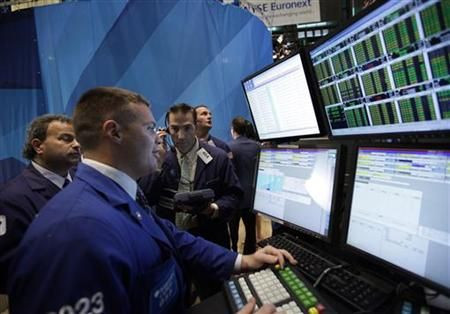10-Year Treasury Yields Hit 60-year Lows

Tom Sowanick is co-president and chief investment officer of Omnivest Group, Princeton, N.J.
The fact that 10-year Treasury yields fell below 2 percent and reached their lowest levels since 1954 may have less to do about economic fundamentals and more to do with who owns what.
While there is growing concern that the U.S. is heading quickly towards another recession, seeing the European banking system under siege and sovereign debt bailout programs unravel, we must not lose sight that Treasury yields have been artificially lowered by the massive buying program of the Federal Reserve associated with QE2.
And while there is no question that the U.S. economy is in a soft patch, we should not over interpret what the bond market is saying about forward economic activity. It should be clear to most economists that holding interest rates at zero distorts all market relationships.
With the U.S. deficit nearing 10 percent of GDP, it is difficult to embrace the fact that 10 year yields are at the lowest levels since the 1950’s, that yields fully incorporate the seriousness of our fiscal deficit, and Bernanke’s statement that inflation may be “transitory”.
What may even be more difficult to understand is why so many economists have yet to adjust their view on the meaning of interest rate levels to reflect the distortions brought about by quantitative easing.
Regardless, fixed income investors are saddled with the dilemma when trying to reach for yield in an ultra low rate environment which places their portfolio in harm’s way when interest rate correction may occur. And while we have eschewed owning Treasury securities for the past 2 years, we see no reason to want to get into the chase of grasping for the last bit of yield in the Treasury market.
Rather, we will continue to hold fast to our corporate allocations, high-yield and private label mortgages.
Our zero interest rate policy and increasing potential for other central banks to start reversing interest rate increases should make investing in risk assets attractive, once again. In the fixed income markets, we prefer lower quality sectors in the corporate and mortgage bond markets. Low quality municipals are also beginning to look attractive but could face downward pressure from rating changes.
Without a doubt, equities are attractive and may even offer sufficient yield to begin to entice fixed income investors into the dividend yield of the equity market.
The dividend yield of the S&P 500 Index is 2.3 percent which compares quite favorably to the 1.1 percent yield of the government bond market and is also competitive to the 3.0 percent yield of the 1-10 year investment grade corporate bond market.
However, until positive price action is restored to the equity market and economic data shows positive momentum, it will be a difficult sell to convince investors to shift out of fixed income and into equities. Often, in times like these, investors are rewarded for taking such bold actions - even if it may feel premature.
© Copyright IBTimes 2024. All rights reserved.





















